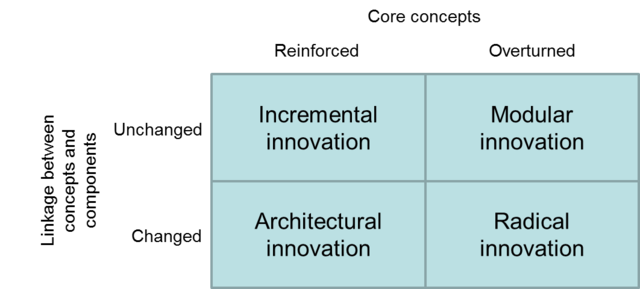A recently published Harvard Business Review analysis, “Reevaluating Incremental Innovation,” cites incremental innovation within R&D as an area where companies with limited budgets outperform their deep-pocketed competitors. The article calls out P&G as a company with major R&D investments that has “bet big and lost big” on blockbuster projects that required hefty funding but ultimately failed to generate revenue.
The authors contrast P&G’s heavy-handed R&D investment strategy with the approach used by Reckitt Benckiser, makers of Finish dishwasher detergent:
“Decades after the original product’s launch, Reckitt Benckiser added a rinse agent and changed the name to Finish 2-in-1. A few years later it added a salt component and renamed the detergent Finish 3-in-1. Today the product is Finish All-in-1, owing to the addition of a glaze-protection agent. With each incremental improvement, sales and profits grew.”
Instead of placing massive bets on potentially high-yield (but also high-risk) opportunities, Reckitt Benckiser and other companies with smaller R&D budgets have crafted a profitable niche in the market by allocating R&D expenditure to improving existing product lines. The authors argue that this is a strategy that other companies – like P&G – would do well to pursue.
However, the author also acknowledges that the benefits provided by a large R&D budget are not necessarily reflected on a company’s top line, but rather can contribute to less tangible benefits, such as cost reductions and product savings. It can also position a company to move quickly when an unexpected market need emerges, while companies with lower R&D budgets may be left in the dust. This is certainly the case for a number of our clients, several of whom have enjoyed blockbuster success by pulling an existing technology off the shelf in response to a customer need – something they could not have done without substantial investment in technology development. Admittedly, our clients are primarily B2B specialty chemicals and materials companies and operate in a different context than either P&G or Reckitt Benckiser, but they face many of the same fundamental questions about innovation – and they, too, must weigh their balance sheet against the less tangible benefits of investing in R&D.
Investing in incremental improvements ensures that current product offerings remain relevant, while maintenance of a stable of new product innovations can give companies a chance to seize new market opportunities as they emerge. There’s certainly an argument to be made that companies with large R&D budgets can prepare better to meet both short and long-term market needs by integrating “smaller bets” into their R&D budgeting – but that doesn’t mean they should lose sight of a bigger, bolder future.
Find out how Newry can help your organization find high-value options for growth. Expand your pipeline before it runs dry.

